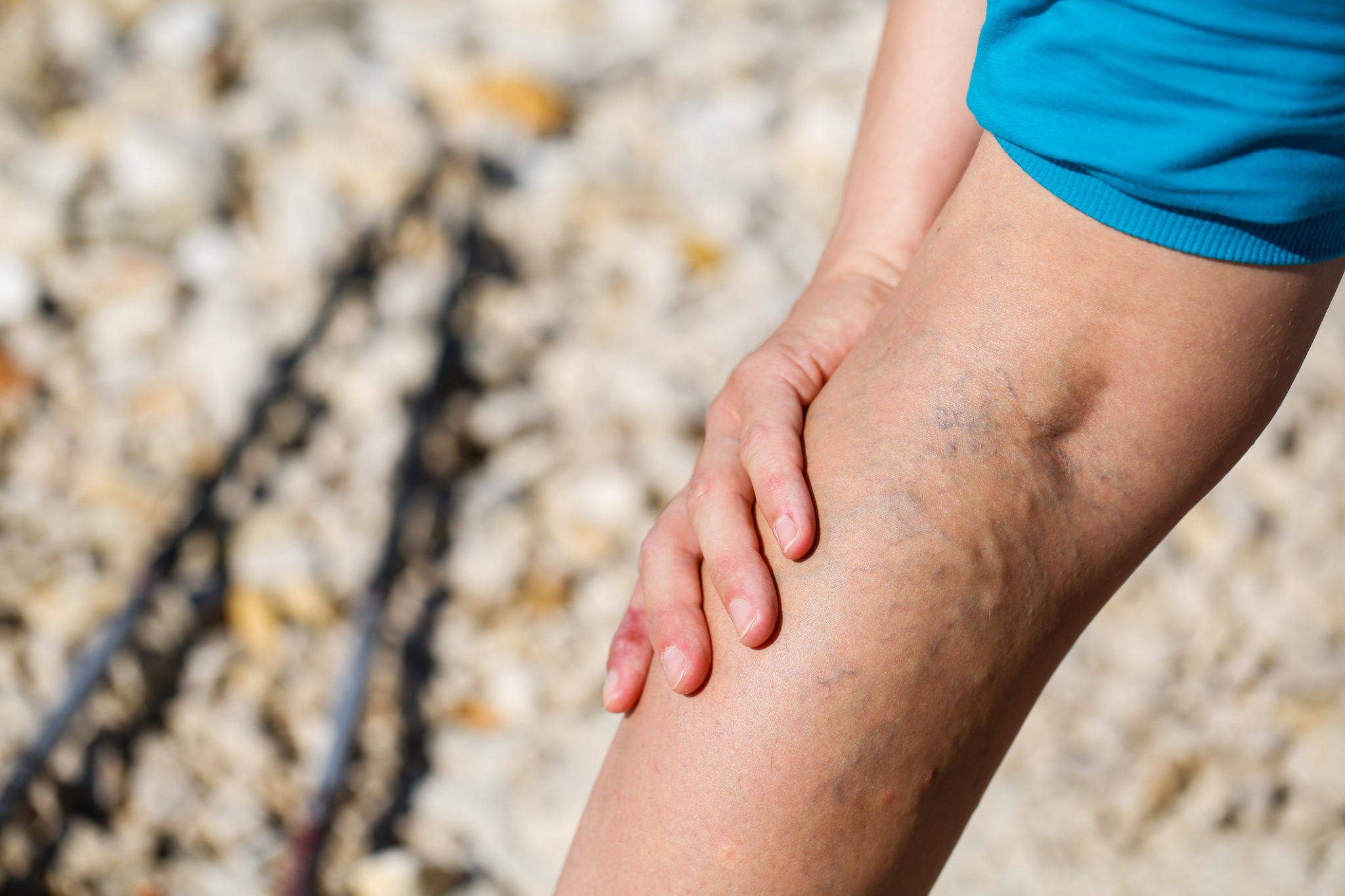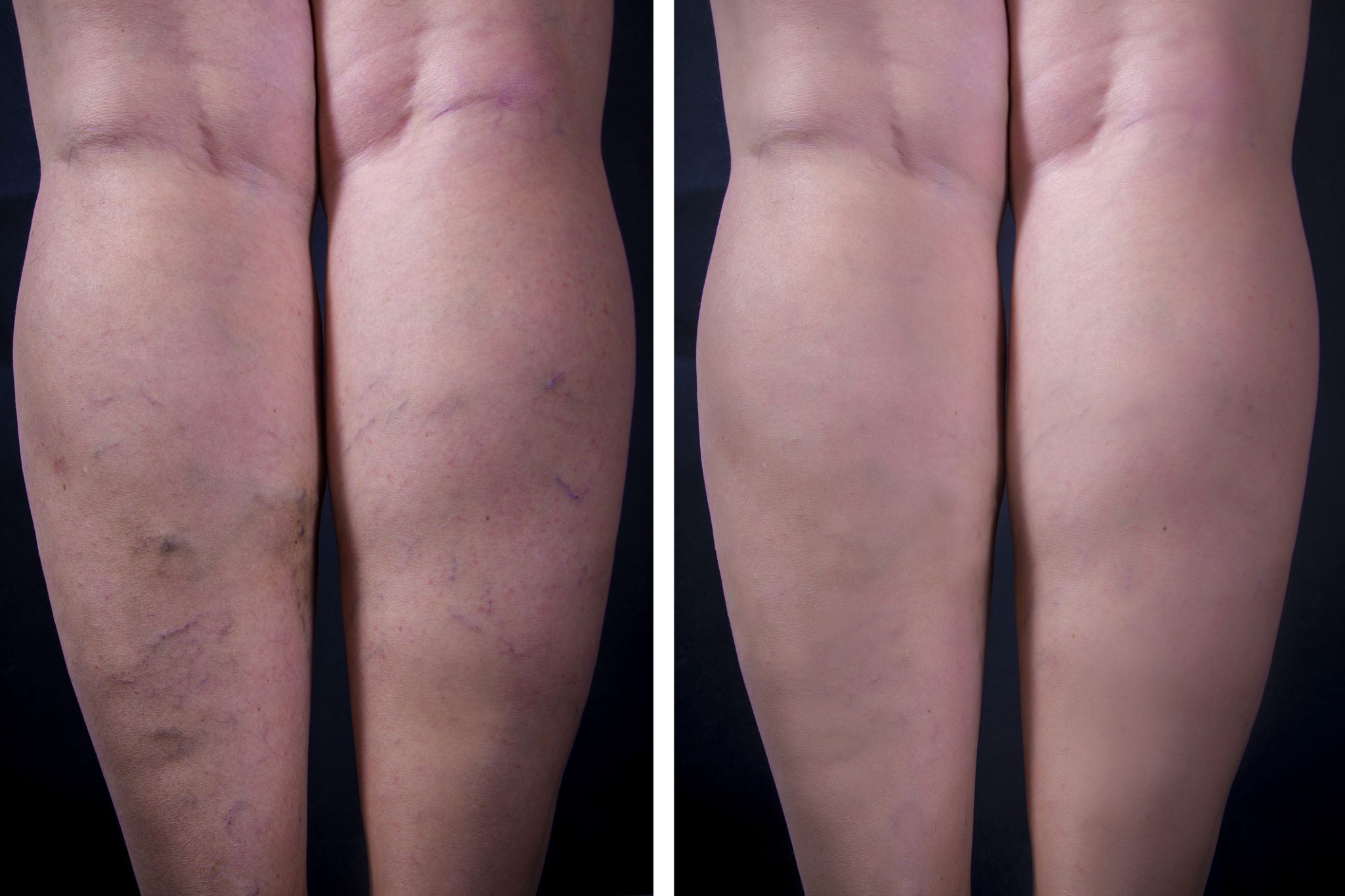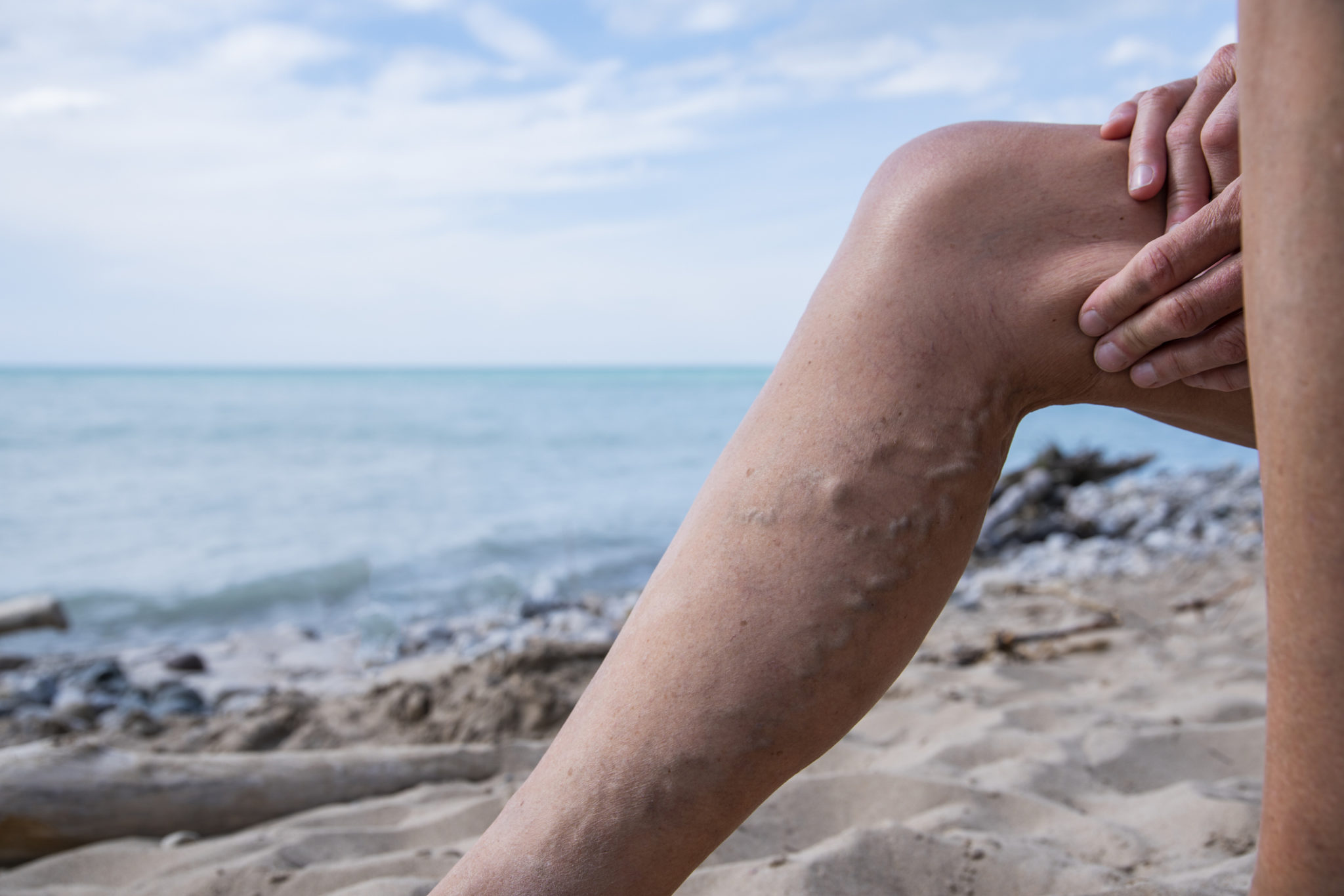Understanding How the Venefit™ Vein Closure Procedure Works and Who Could Benefit
Many people initially consider their varicose veins little more than an annoyance, a cosmetic concern. Far too few realize that varicose veins can eventually cause a significant amount of discomfort as circulation and vein health continues to deteriorate. While elevating your legs and other lifestyle modifications can temporarily ease your suffering, varicose veins will not resolve on their own. Chronic venous insufficiency, the cause of varicose veins, is a progressive vein disorder.
In our not-so-distant past, people living with varicose veins had two primary treatment options, wearing medical-grade compression stockings or having diseased veins surgically removed.
While compression stockings are still considered the first line of defense, today’s vein specialists are far more likely to recommend one of the many minimally invasive treatment options made available through advances in medical technology. As an alternative to surgical intervention, your vein specialist may recommend treating your varicose veins with a Venefit™ Closure Procedure, a safe, effective, treatment option.
Understanding Your Minimally Invasive Treatment Options
Today, people living with varicose veins have a significant number of minimally invasive alternatives to painful surgery. Depending on their size and location, problematic veins can be closed with injectable foam (sclerotherapy), removed through small incisions (ambulatory phlebectomy), or eliminated using radiofrequency ablation (RFA) or Endoscopic Venous Laser Treatment (EVLT).
Since radiofrequency ablation has been available longer than EVLT, many patients understandably assume that laser treatment is superior to radiofrequency. After all, laser treatment represents the very latest in medical advancements, the most recent development. That may be why so many varicose vein patients are surprised to discover that Venefit™ RFA is shown to be more effective for long-term treatment, safer, and significantly less painful than EVLT.
Closing Diseased Veins with Radiofrequency Energy
Previously known as the VNUS™ Closure Procedure, the Venefit™ procedure is a minimally invasive outpatient treatment that closes diseased veins using radiofrequency energy guided by ultrasound technology. An ultrasound scanner is used to track treatment progress as radiofrequency energy heats and collapses problematic veins. The entire process can be completed in as little as 30 minutes. Knowing how the process works could help you decide if Venefit™ vein closure could be right for you. Consider the following explanation of the treatment method:
- The treatment area is numbed with a local anesthetic. The entire area will then be cleaned, sterilized, and covered with a surgical drape. You may be pleased to know that injecting the anesthetic is the most unpleasant part of the procedure.
- After the area is numbed, a small, shallow opening is made in your skin to access the diseased vein. Your doctor will insert a small radio frequency powered catheter positioned with the assistance of ultrasound imaging. You may feel a slight amount of pressure, but the sensation is not painful.
- Your specialist will treat each section with uniform, consistent bursts of painless radiofrequency energy. The heat causes the collagen in the vein walls to contract and collapse. After the diseased vein collapses, circulation is automatically redirected to healthy blood vessels. The damaged vein is eventually reabsorbed by surrounding tissue.
- The treatment area is wrapped with an elastic bandage. Sutures will not be necessary. You can anticipate returning to your usual activities within 1-2 days after treatment, but most patients are able to resume their routine almost immediately after treatment, with little to no pain.
After your procedure, it is unlikely you will experience any bleeding or significant bruising in the treatment area, but it can happen. The side effects of the Venefit™ procedure are generally mild and usually resolve within two weeks.
Your doctor will recommend a follow-up appointment for an ultrasound exam to track your progress. Be sure to adhere to the appointment schedule recommended by your physician. Most often, you will be asked to make an appointment within the first week of treatment, and again after 30 days. Since the treated vein is not removed during your procedure, it may take a few weeks to notice significant improvement in your symptoms.

Treating the Many Symptoms of Varicose Veins with Venefit™ Closure
If you have problematic varicose veins, if you are troubled by their appearance or concerned about the progression of your vein disorder, it’s important to know that there are numerous treatment options available. Venefit™ Closure treatment may be your best option if you have larger varicose veins or are looking for a non-surgical alternative to vein stripping. If you recognize one or more of the following symptoms, Venefit™ Closure could be right for you:
Varicose Veins Make Your Legs Feel Tired or Heavy
Many people experience a general feeling of heaviness in their legs as varicose veins progress. As circulation is disrupted by valves that fail to close, blood and accumulated fluids are pooling in your lower extremities when your calf muscles relax. That’s why your legs may feel heavy. You may also experience other troubling symptoms that might include tingling, burning, itching, or throbbing. Symptoms caused by varicose veins will most often improve while your legs are elevated. You may also find significant relieve while wearing medical-grade compression stockings. While elevation and compression can alleviate your discomfort, only varicose vein treatment offers a permanent solution.
Varicose Veins Are Causing Your Legs to Swell
Varicose veins can also be accompanied by swelling of the lower leg, feet, or ankles. What you see is the result of tissue expansion caused by fluid retention. You may notice that swollen areas remain indented when pressure is applied, a condition commonly known as venous edema. The increased fluid retention is the result of smaller blood vessels leaking plasma, proteins, and waste into surrounding tissues.
Smaller blood vessels begin to leak because the area of the vein below the damage is flooded with more fluid than it can handle. Although swelling most often affects the calves and ankles, you may also find that varicose veins can cause your feet and toes to swell as well. Although leg swelling can be caused by venous insufficiency, it can also be a sign of a blockage, particularly if only one leg is affected, so it’s important not to self-diagnose.
Your Varicose Veins Are Causing Skin Discoloration
As vein disease progresses, you may notice significant changes in the texture or color of your skin. You might find that the skin on your lower leg starts to look hard, shiny, scaled, or bumpy. As distressed blood vessels leak blood cells, you may also find that your lower leg turns various shades of red or brown. The changes to the color or texture may also be accompanied by uncomfortable itching or skin rashes.
These characteristic skin changes are called stasis dermatitis. Stasis dermatitis is a sign that impaired circulation is interfering with your skin’s ability to rejuvenate and repair. Over time, recurring bouts of stasis dermatitis can cause permanent skin changes and scarring. Varicose vein treatment with Venefit™ radiofrequency will restore healthy circulation and could significantly improve the comfort and appearance of your skin.
Varicose Veins are Causing Slow-Healing Wounds
As fluid accumulates in the tissues surrounding varicose veins, you may find that impaired skin health eventually causes open wounds on your legs that heal slowly, venous stasis ulcers. Most often, ulcer formation is the result of fluid accumulation interfering with waste removal or protein deposits (fibrin), starving the affected areas of essential nutrients and oxygen. Venous ulcers are most likely to form near your ankle but can appear anywhere on your lower leg, particularly if there has been any type of skin trauma.
You may be surprised to discover that venous stasis ulcers are not particularly painful unless they become infected, but they can take months or years to resolve, even with consistent medical treatment. Once healed, venous ulcers often return. Most people with difficult venous stasis ulcers benefit from treating the underlying cause of their disorder. As circulation improves after Venefit™ treatment, the risk of recurring ulcers is significantly reduced.

What to Expect After Your Venefit™ Closure Treatment
Radiofrequency vein ablation is considerably safer than conventional vein stripping and EVLT with a significantly lower risk of complications. While it is commonly expected that patients can resume their normal activities within 1-2 days after treatment, most find they feel comfortable returning to their daily activities much sooner, experiencing little to no pain.
Although you may feel much better than you were anticipating after your treatment, it’s important to follow your doctor’s advice in the days and weeks following your procedure. In general, most doctors commonly recommend:
- Wearing compression stockings to minimize the risk of bruising, tenderness, and blood clot formation (rare). You can expect to wear compression garments for approximately two weeks after your Venefit™ procedure.
- Walking frequently to encourage healthy circulation and minimize the risk of complications. While mild to moderate exercise is encouraged, your specialist may recommend limiting strenuous activity, including heavy lifting, for two weeks or more.
- Elevating your legs above heart level periodically throughout the day. Leg elevation helps minimize any potential discomfort and reduces the pressure in your veins.
- Keeping the treatment area clean and dry for 24 hours after your procedure. You may shower the day after your procedure, but should avoid pools, hot tubs, and baths until you are fully healed (approximately one week, maybe more). Avoiding long soaks significantly reduces your risk of irritation and infection.
- Restricting air travel for several weeks. While the risk of blood clots is minimal with this procedure, most doctors advise patients against flying for four to six weeks before and after treatment. If you must rely on air travel, discuss your travel plans with your physician before scheduling your vein treatment.
- Avoiding prolonged sitting or standing for more than a few hours. Your doctor will likely recommend that you try to change your position at least every few hours. Many specialists advise their patients to take a brisk 5-minute walk several times throughout the day. If you need to stand for several hours at a time, take periodic breaks to elevate your legs above your heart, but get up and move around if you have been sitting.
Venefit™ Vein Closure May Not Be Right for Everyone
In a large, multi-center international study, the Venefit™ Closure Procedure has been proven 93 percent effective over a three-year period. While a significant number of people have benefited from this minimally invasive procedure, Venefit™ treatment may not be right for everyone. The only way to know if the Venefit™ Closure Procedure is your best treatment option is to visit a vein specialist in your area. Your specialist may recommend an alternative treatment option if you have one or more of the following conditions:
- Twisted (tortuous) veins that would be difficult to catheterize
- A segment of vein too short to catheterize
- A blood clot in the treatment area
- A pacemaker, internal defibrillator, or other implanted device (unless approved by your cardiologist and the implant manufacturer)
Ask Your Vein Specialist About the Venefit™ Closure Procedure
Venous insufficiency is a progressive disorder, a disease with three distinct stages. Eventually, those twisted, bulging veins can cause significant complications. As vein disease progresses, you may experience increased discomfort, changes in the color and texture of your skin, or open wounds that take a long time to heal. Varicose vein treatments restore healthy circulation while improving the comfort and appearance of your legs.
You may be a bit surprised to learn that nearly a third of our population has some form of vein disease by the time they reach their mid-40s, but only a small percentage seek treatment before experiencing significant complications.
If your varicose veins are causing considerable pain or discomfort, or if you prefer to have your varicose veins treated before they cause significant distress, consider scheduling a consultation with a vein specialist.
For compassionate, state-of-the-art vein care in Henderson, NV, contact Vegas Valley Vein Institute. At Vegas Valley Vein Institute, you benefit from our comprehensive approach to varicose vein treatment utilizing both traditional and state-of-the-art non-surgical treatment options provided by the Valley’s leading vein care specialist, Dr Irwin Simon.
Additional Sources:
https://www.iowaclinic.com/treatments-and-conditions/chronic-venous-insufficiency/
https://www.healthline.com/health/noninvasive-varicose-vein-treatment#types
https://www.ncbi.nlm.nih.gov/pmc/articles/PMC3036276/
https://my.clevelandclinic.org/health/diseases/16872-chronic-venous-insufficiency-cvi
